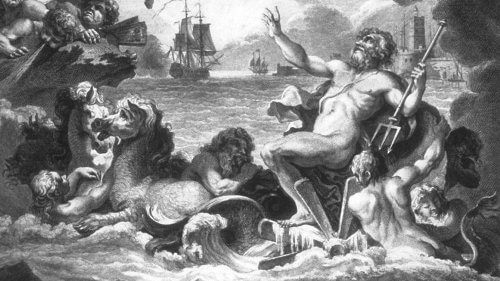

For most persons, the words 'map' and 'chart' are freely interchangeable. However, a distinction may be made between the two. Concern of landsmen is with the geographic characteristics within their realm--its rivers, mountains, forests and swamps, al...

Exhibition CuratorsDr. Harold L. Osher: Introduction; (2) Classic Treasures; and, (1) What is a Treasure? (with Prof. Edney).Prof. Matthew H. Edney: (4c) School Geographies; (5) Manuscript Treasures; and, (6) Monumental Treasures.Yolanda Theunissen: ...

Since before recorded history, humans have observed the motions of the stars, trying to figure out where they were. Eventually, they made physical models of the night sky: that is, globes and celestial maps. The first recorded celestial globe in Gree...

The earliest globes, made in the Classical world, were painted directly onto solid spheres. In the late fifteenth century, a new technique was developed of printing globe "gores" which could then be pasted onto the sphere (70, 71). This innovation se...

Spanning over two hundred years, these four maps illustrate the evolution of cartography from the artistry of the Dutch "golden age" of the sixteenth and seventeenth centuries to the more rigorously scientific maps of the "age of enlightenment." With...

Wall maps have a high mortality rate. They fray under their own weight; their heavy rollers drag down on them even more; even if backed onto cloth for support, the cloth is eaten by insects. They are blackened by the smoke and soot of open fires and ...

Manuscript maps -- which are written ("script") by hand ("manu") -- are generally held to precede printed maps. Historically, maps were made by hand before the introduction of printing. Technically, a map is first drafted by hand before a printing pl...

It is understandable, given the manner in which the history of the United States is intimately bound up with the expansion and use of its territory, that geography was a central component of school education. To be effective citizens, children had to...

Other aspects of the industrial revolution included a steady rise in the standard of living and an associated increase in the consumption of culture. Among the large and illustrated Bibles, prints by Currier and Ives, upright pianos, and ornate furni...

The industrial revolution entailed, among other things, the expansion of towns and cities, the continual reworking of urban infrastructures, and the increasing specialization of knowledge. Inevitably, there evolved several groups of professionals, ea...